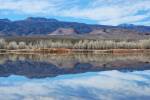Explore a desert oasis that’s home to rare species of fish, plants
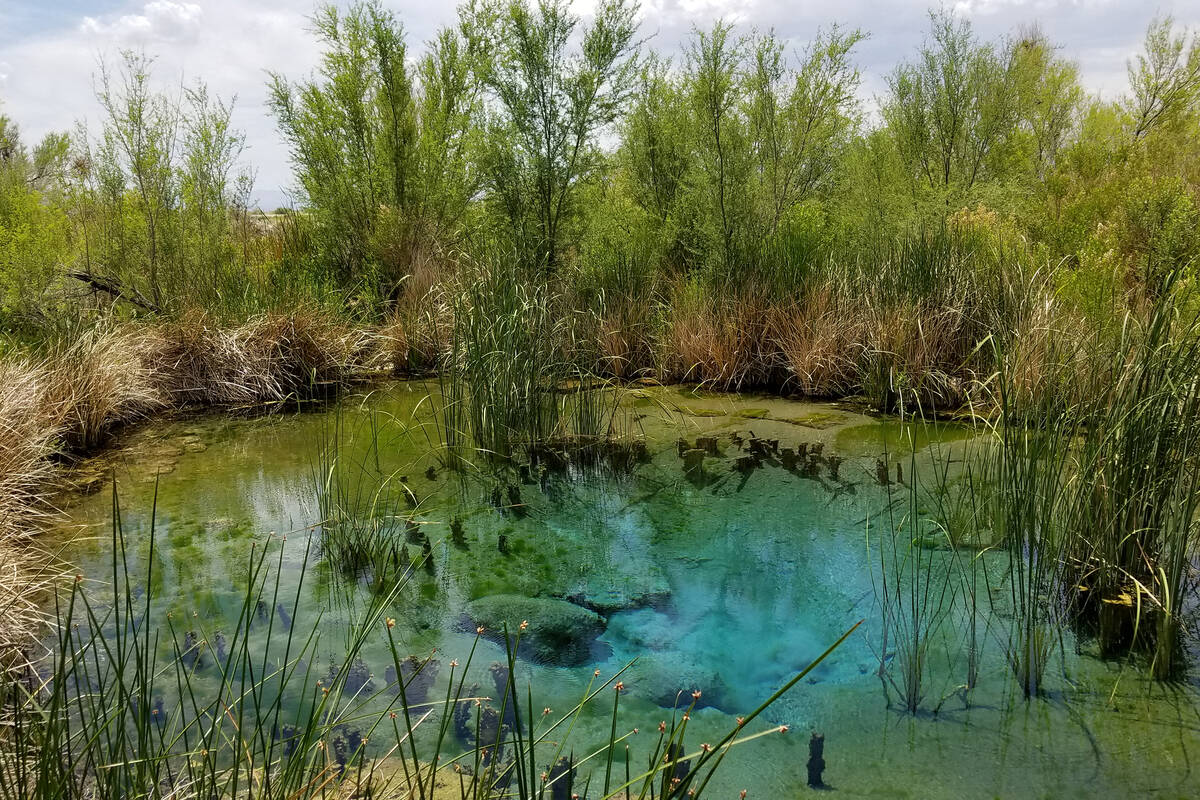
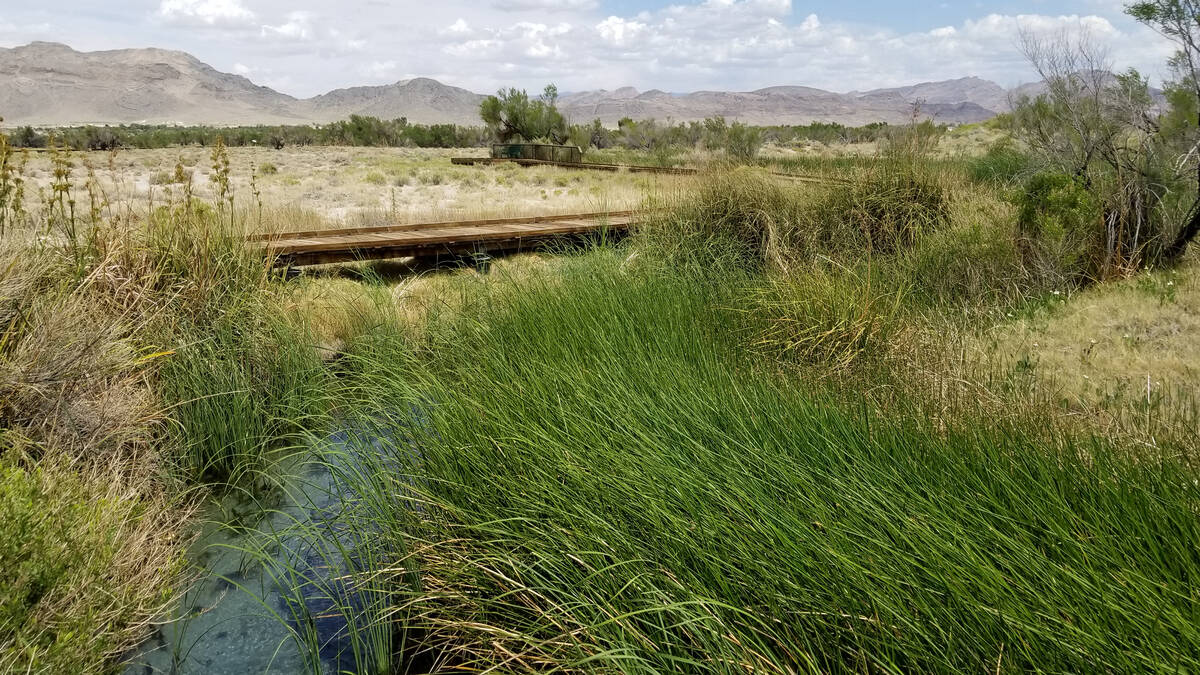

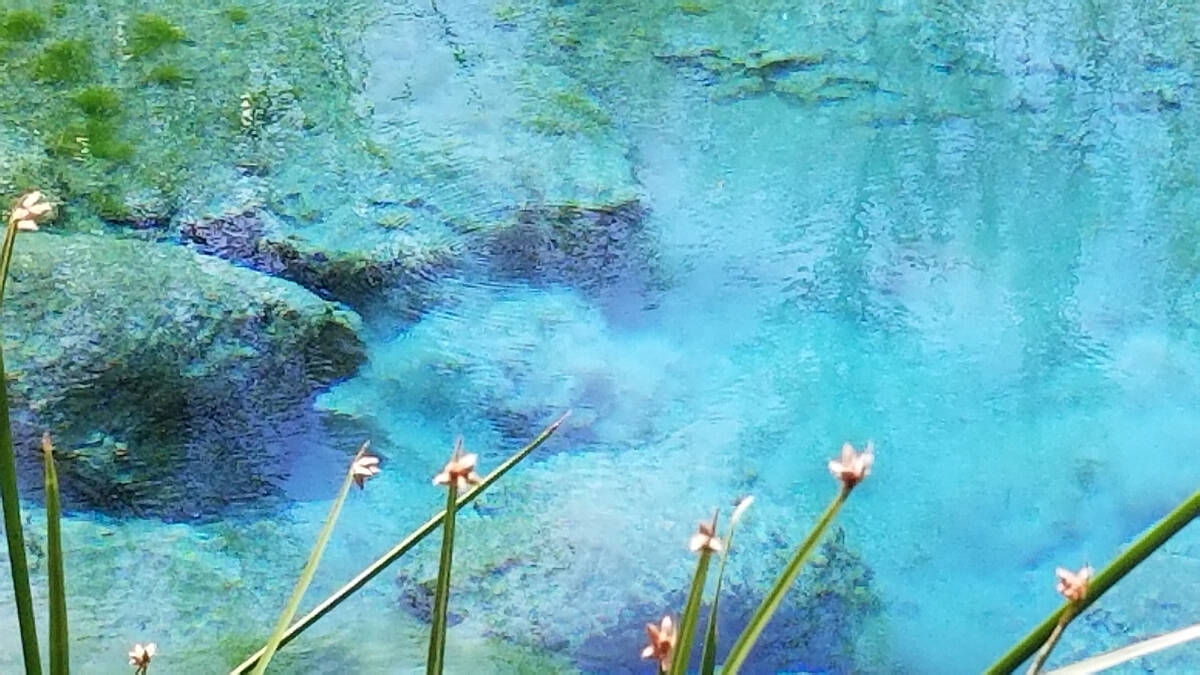
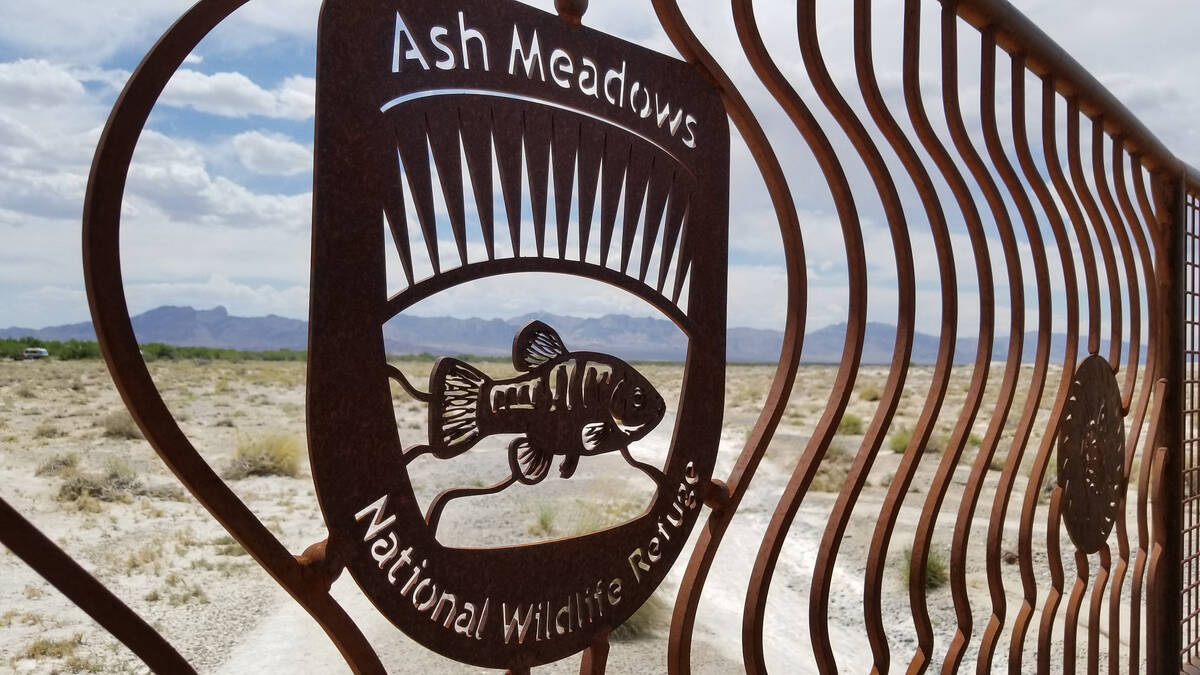




Tropical blue hues tend to pop against autumn’s subdued browns, beiges and golds in North America’s driest desert. So, the turquoise pools and glittery electric-blue pupfish stand out at Ash Meadows National Wildlife Refuge, a remarkable Mojave Desert oasis about 90 miles west of Las Vegas.
A U.S. Fish and Wildlife roadside sign for Ash Meadows might catch the attention of motorists heading from Las Vegas through Pahrump toward Death Valley National Park, which is expected to reopen Sunday after cleanup from destructive flooding caused by Tropical Storm Hilary. But only a small fraction of the Death Valley crowd stops at the wildlife complex, which includes an impressive visitor center, wheelchair-accessible boardwalks, picnic areas and plenty of opportunity for spotting rare pupfish in their natural habitats, viewing resident and migrant birds and possibly glimpsing bighorn sheep on nearby hilltops.
A fall day spent in such a unique setting under an expansive, clear or cloud-streaked sky is worth the investment of time and $5-a-gallon gas. A day trip is justified because of the unexpected sight of water bubbling up into clear, vivid spring-fed pools inhabited by tiny, opalescent fish. In large part because of its geographic isolation, the wetlands area has the densest concentration of endemic species in the United States, providing habitat for 26 types of plants, fish, snails and insects found nowhere else on Earth.
The life-sustaining effect of Ash Meadows is tied to its Ice Age heritage. Geothermally warmed fossilized water that’s thousands of years old rises continually to the surface, creating the Mojave Desert’s largest oasis. The sparkling blue Ash Meadows Amargosa pupfish is one of four endangered fish species living their precarious lives there. From boardwalks and viewing platforms, the fish may be seen up close in natural settings where measures have been taken to keep them safe.
Endemic flowers may not be blooming this time of year at the refuge, but the plants’ home of salty-looking alkaline desert uplands and spring-fed wetlands will be in full view, along with Nevada and California’s dramatic mountain geology. The trails at Ash Meadows are short and simple, while the vistas are giant and complicated.
Here are the must-stops during a visit to Ash Meadows:
Point of Rocks boardwalk
Typically my first stop, Point of Rocks has wide paved paths and boardwalks that meander through mesquite groves and lead to crystal-clear pools where sparkling blue and silver fish frolic, hide behind rocks and dart in and out of algae clumps. The Ash Meadows Amargosa pupfish, whose name reflects the playful-as-a-puppy impression it makes, has been swimming in the area since mammoths and sloths roamed Southern Nevada. They are easily spotted and mesmerizing to watch.
To take in the nature show and desert solitude in comfort, benches are offered at Kings Pool. Interpretive panels along the trail help explain the significance of this biodiversity hot spot. The easy half-mile loop also includes a viewpoint with spotting scopes, giving visitors a better chance to see bighorn sheep on the nearby Devils Hole hills.
Visitor center, Crystal Spring boardwalk
The Ash Meadows visitor center is an answer hub for questions about the refuge’s 26 endemic plants and animals, many of which are threatened or endangered. Illustrations and photos show the differences among Ash Meadows speckled dace, Warm Springs pupfish and Devils Hole pupfish, all of which are much more difficult to find than the Ash Meadows Amargosa pupfish. Information is also shared about the ancient underground network of more than 50 seeps and springs below the nearly 24,000 acres of Ash Meadows.
Interpretive panels show plans from the early 1980s by developers to build 30,000 homes, an airstrip and hotels at Ash Meadows. Conservationists fought that development, which threatened to siphon groundwater at rates that would further damage an ecosystem harmed by previous commercial activity. Legal maneuvering and a land purchase by the Nature Conservancy eventually led to government protection of Ash Meadows as a refuge in 1984.
The Devils Hole pupfish, a species protected by the Endangered Species Act since 1967 and whose habitat was shielded by the U.S. Supreme Court in 1976, lives in only one location in the world, a National Park Service-managed spot in Ash Meadows.
In July, the Bureau of Land Management formally paused a plan for lithium drilling near Ash Meadows by a Canadian mining company because of potential threats to underground waters that sustain endangered species at the refuge.
Learning about Ash Meadows in the air-conditioned visitor center’s interactive exhibit hall and watching a short film about the refuge’s history are two recommended activities.
The extra information and insight will help visitors better appreciate what they see along the Crystal Spring boardwalk right behind the visitor center. A Caribbean-blue pool with Ash Meadows Amargosa pupfish awaits, and visitors can also spot animal tracks, endemic plants that have gone to seed, roadrunners and jackrabbits from the boardwalk in autumn. Flowers, greenery and lizards will be more abundant in the spring.
The complete Crystal Spring walk is a little less than a mile round trip and has benches along the way as well as a viewing area with spotting scopes near the pool. Binoculars will help with spying on pupfish. Every minute, the spring adds 2,800 gallons of water to the pool, which is about 15 feet deep. The water, with such striking shades of blue as it mixes with limestone particles, stays a consistent 87 degrees and flows outward to creeks and marshes, some of which are also visible from the boardwalk.
Devils Hole
There won’t be any close-up looks at the tiny Devils Hole pupfish, so pack binoculars and cross your fingers if you’re hoping to see one of the planet’s most endangered and protected fish. Distance, water clarity and shadows might make seeing these 1-inch fish a challenge. Visitors also may feel like they are attempting their feat from inside a cage. The National Park Service provides visitors with a fenced-in high viewing platform to see the home of fish on the perpetual brink of extinction. The Devils Hole pupfish’s only natural home, a cavern that’s filled with water at temperatures in the low 90s, is visible after a short walk on a dirt trail. Part of Death Valley National Park, the deep cavern is located within the boundaries of Ash Meadows, which has a road leading to the site.
Last fall, biologists reported counting 263 Devils Hole pupfish, which was the most they have observed in 19 years. The number of Devils Hole pupfish counted in 2013 was down to 35.
Ash Meadows info
More information about visiting Ash Meadows National Wildlife Refuge is available at fws.gov/refuge/ash-meadows. Call 775-372-5435 for road conditions and visitor center hours.


















